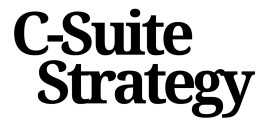
Understanding Category Leadership in the Modern Market
In today's fast-paced marketplace, achieving category leadership is a defining factor for companies like Danone aiming to excel in the global business arena. As a Chief Executive Officer, understanding the intricacies of category leadership can make the difference between being a market leader or a mere participant. From Paris to North America, the dynamics are continuously evolving, and it's crucial for the board directors and executives to stay ahead. With its diverse product portfolio ranging from specialized nutrition to plant-based options, Danone exemplifies how a company can maneuver these waters effectively.
Decoding the Modern Market Landscape
The modern market is characterized by rapid change and heightened competition. It's no longer sufficient to rely solely on traditional business practices. For management teams and corporate leaders, recognizing category leadership involves a deep understanding of market trends, consumer behavior, and strategic innovation. As the business landscape evolves, so must the strategies of the company. By leveraging data and insights, executives can anticipate shifts and position their brands accordingly, ensuring sustained relevance and competitiveness.
Furthermore, the role of a chief officer is not confined to corporate strategy or operational demands. It also includes fostering an environment of innovation and adaptability. Danone's executive officers, for example, are responsible for steering the company towards growth opportunities across its diverse markets, from Saint Affrique to America. They focus on aligning marketing strategies with the company's overarching vision, thus ensuring a cohesive approach to category leadership.
Being a leader in a category means not only understanding customer needs but also anticipating them. The significance of engaging with stakeholders — including supply chain partners, board directors, and the leadership team — is paramount to fostering robust relationships. These relationships are built on trust and a shared commitment to the company’s success.
Strategic Innovation: A Key Driver for Category Leadership
Innovation Strategies Driving Market Leadership
To effectively navigate the complexities of category leadership, Danone’s directors must harness the power of strategic innovation. As a company rooted in specialized nutrition and plant-based solutions, Danone's leadership team understands that innovation is crucial for maintaining a competitive edge in the global market. For C-suite executives, fostering an innovation-driven culture involves a meticulous blend of data-driven strategies and market insights.- Pioneering Product Development: For Danone, operating at the helm of industry trends requires agile product development that anticipates consumer needs. Building on its heritage, the company has consistently evolved its portfolio, addressing the growing demand for plant-based and specialized nutrition options. Such innovation is not just about expanding the product line but also about transforming the supply chain to facilitate faster and more efficient delivery to market.
- Harnessing Data and Insights: Executives at Danone prioritize data as a cornerstone of their innovation strategy. By leveraging advanced analytics, the company can better understand shifting consumer behaviors, allowing the executive team to tailor their offerings effectively. In the rapidly changing dietary landscape, these insights are indispensable for making informed, strategic decisions that reinforce market position.
- Collaboration and Cross-Functional Teams: Establishing collaborative mechanisms across departments contributes significantly to the innovation agenda. At Danone, this ethos is reflected in the seamless partnership between marketing, R&D, and supply chain functions. By fostering cross-functional initiatives, Danone ensures that all aspects of the product lifecycle are aligned with its strategic objectives.
Market Dynamics and Consumer Trends
Understanding Evolving Consumer Behavior and Market Forces
Navigating the intricate landscape of modern-day business requires a nuanced understanding of market dynamics and consumer trends. Companies like Danone, a global leader in specialized nutrition and plant-based products, are continuously adapting to evolving consumer preferences and economic conditions. The role of the chief executive officer and their leadership team in Paris and beyond has never been more critical. In a marketplace characterized by rapid change, the ability to anticipate and respond to consumer demands is crucial. For executives, this means harnessing insights from data and using them to inform corporate strategy. With diversified offerings from plant-based options to specialized nutrition, understanding these patterns can guide strategic innovation, which is fundamental for category leadership. Moreover, as companies expand their reach, whether within North America or in emerging markets, understanding local consumer behaviors becomes pivotal. The vice president or general manager responsible for different regions must collaborate with the board directors to ensure that strategic objectives resonate with the nuanced demands of each market. Furthermore, the interconnectedness of the global market demands that the director category and management teams remain agile. This agility allows them to pivot and adjust strategies as market conditions shift, influenced by everything from economic policy changes to cultural shifts. Overall, the CEO and the leadership team, including stakeholders in America and Europe, must leverage technology and data analytics not only for operational efficiency but also for strategic foresight in marketing. By doing so, companies like Danone can maintain their competitive edge and reinforce their position as leaders in their respective sectors. For more insights on implementing effective strategies utilizing data and technology, refer to insights for strategic leadership.Building Strong Stakeholder Relationships
Fostering Robust Connections with Stakeholders
In the pursuit of category leadership, fostering strong relationships with stakeholders is a critical component for any chief executive officer. For a global company like Danone, headquartered in Paris, the intricate web of stakeholder relationships spans across continents, including North America and beyond. Building these relationships requires a strategic approach, as they are pivotal to the company's success in specialized nutrition and plant-based categories.
One of the key elements in nurturing these connections is transparency. The board of directors, along with the executive team, must ensure that communication channels are open and that stakeholders are informed about the company's strategic direction. This transparency builds trust, which is essential for long-term partnerships.
Moreover, the role of data cannot be overstated. Utilizing data effectively allows Danone's leadership team to understand stakeholder needs and expectations better. This data-driven approach enables the company to tailor its strategies, ensuring alignment with stakeholder interests. For instance, insights from data analytics can guide the marketing strategies employed by the company, thereby enhancing stakeholder engagement.
Additionally, the supply chain plays a crucial role in stakeholder management. By optimizing the supply chain, Danone can ensure timely delivery of products, which is a significant factor in maintaining strong relationships with both suppliers and customers. This optimization also supports the company's sustainability goals, further solidifying its reputation as a responsible corporate entity.
Finally, the involvement of the leadership team, including the deputy CEO and vice presidents, is vital in maintaining these relationships. Their active participation in stakeholder dialogues ensures that the company's strategic initiatives are well-received and supported. By prioritizing stakeholder relationships, Danone can strengthen its position as a category leader in the competitive business landscape.
Leveraging Data and Technology for Competitive Advantage
Utilizing Data and Technological Innovations
In the pursuit of category leadership, leveraging data and technology is paramount for Danone's executive team. As a chief executive officer driving business strategy from Paris to North America, embracing these tools can enhance decision-making and unlock new marketing opportunities.
Global corporations like Danone, including its subsidiaries such as Danone North America, must effectively manage their data assets to stay ahead of the competition. The ability to transform data into actionable insights allows management teams to respond swiftly to evolving market dynamics and consumer behaviors.
- Data-Driven Strategies: Embedding data into corporate strategy empowers directors and board members to identify trends and adjust quickly. Analyzing customer preferences aids in tailoring category-specific marketing efforts, ensuring that offerings resonate with diverse consumer needs.
- Innovative Technology Integration: Leveraging cutting-edge technologies like AI and machine learning can streamline supply chain operations and optimize specialized nutrition categories, effectively reducing costs and improving product quality.
- Stakeholder Engagement: Harnessing data can also reinforce stakeholder relationships by offering transparency and measurable outcomes that align with sustainability goals, crucial for building trust and credibility.
Danone's leadership is tasked with not only employing technological solutions but also fostering an organizational culture that adapts to these innovations. As an globally recognized entity—akin to industry powerhouses such as Coca-Cola—continuously advancing in technological capacities is indispensable.
Executives, including the group deputy and vice president layers, should prioritize investing in data management systems and technological advancements. This strategy ensures long-term growth and solidifies Danone's position as a leader in the plant-based sector and beyond.
Sustainability as a Pillar of Category Leadership
Sustainability as a Cornerstone for Leadership
Navigating the intricate landscape of global business today demands a nuanced approach to sustainability. For the executive team of a prominent institution like Danone, embedding sustainability into the core of its category strategy is not merely an aspirational target; it is imperative. In an era marked by climate consciousness and corporate accountability, integrating sustainable practices into strategic planning can drive long-term success while aligning with consumer expectations. Sustainability is no longer viewed as an isolated corporate social responsibility (CSR) initiative, but rather as a vital component of enterprise strategy. The board directors and executives must consider these elements to maintain category leadership:- Sustainable Supply Chains: Streamlining the supply chain to reduce carbon footprint and enhance resource efficiency can significantly contribute to a company's eco-friendly goals. As seen in the practices of peers such as Coca Cola, incorporating innovative solutions in logistics and resource management is critical. This aligns with the broader business objectives of corporate responsibility and long-term viability.
- Plant-based and Specialized Nutrition: The rise in demand for plant-based products offers an opportunity for companies like Danone to capitalize on this trend. By investing in R&D for specialized nutrition products, the leadership team can ensure that offerings meet consumer demands for healthier, sustainable options.
- Data-Driven Sustainability Decisions: Utilizing data analytics to track the impact of sustainable initiatives can offer insights into operational efficiencies and areas for improvement. This data-driven approach, overseen by a keen director of category, can help quantify sustainability efforts, making them more tangible for the chief executive and the board.
- Global and Local Synergies: Striking a balance between global strategy and local implementation is essential. Danone North America, for instance, can leverage its position by adopting localized strategies aligned with global sustainability initiatives, ensuring that business practices in Paris resonate with those in North America.














